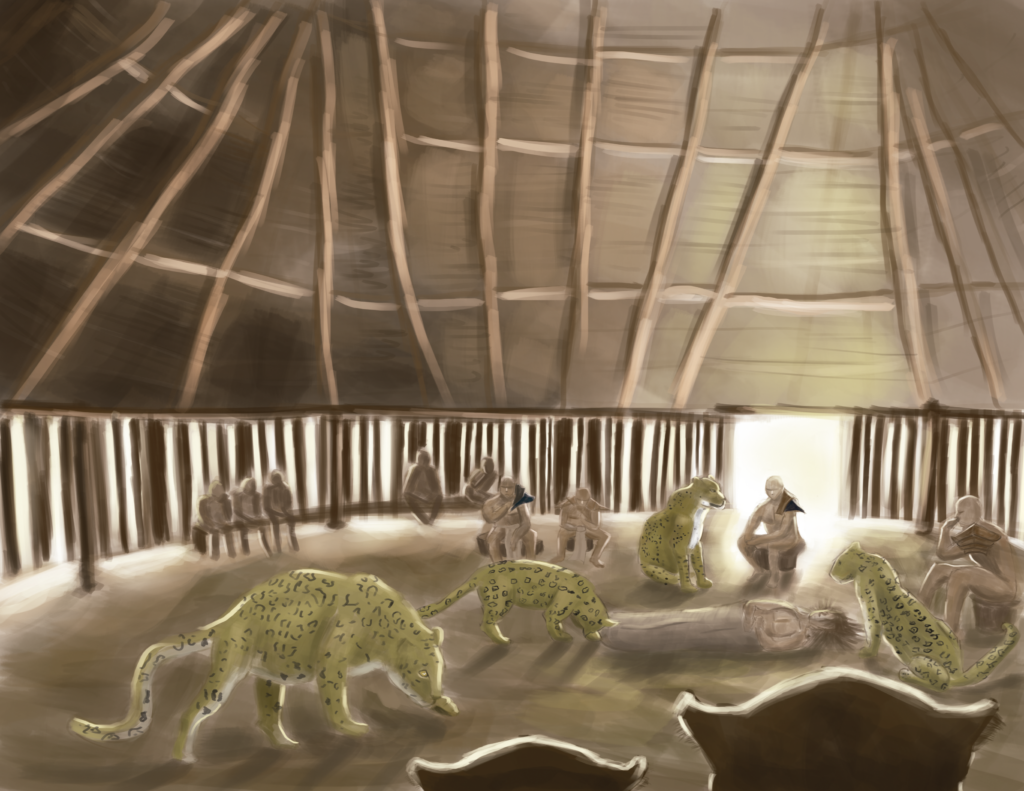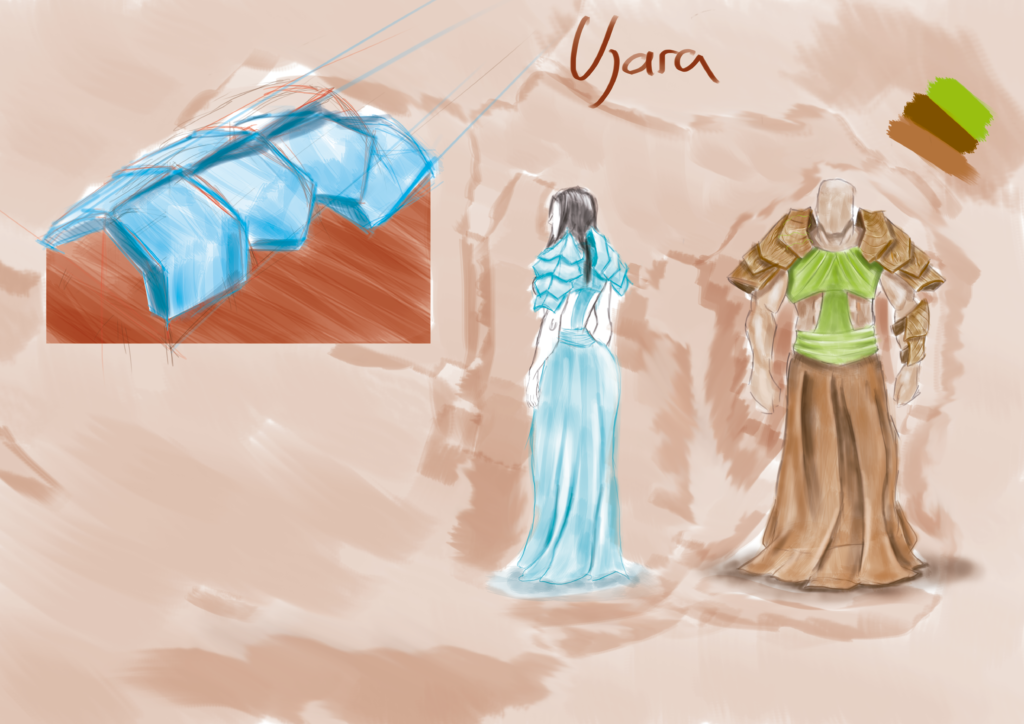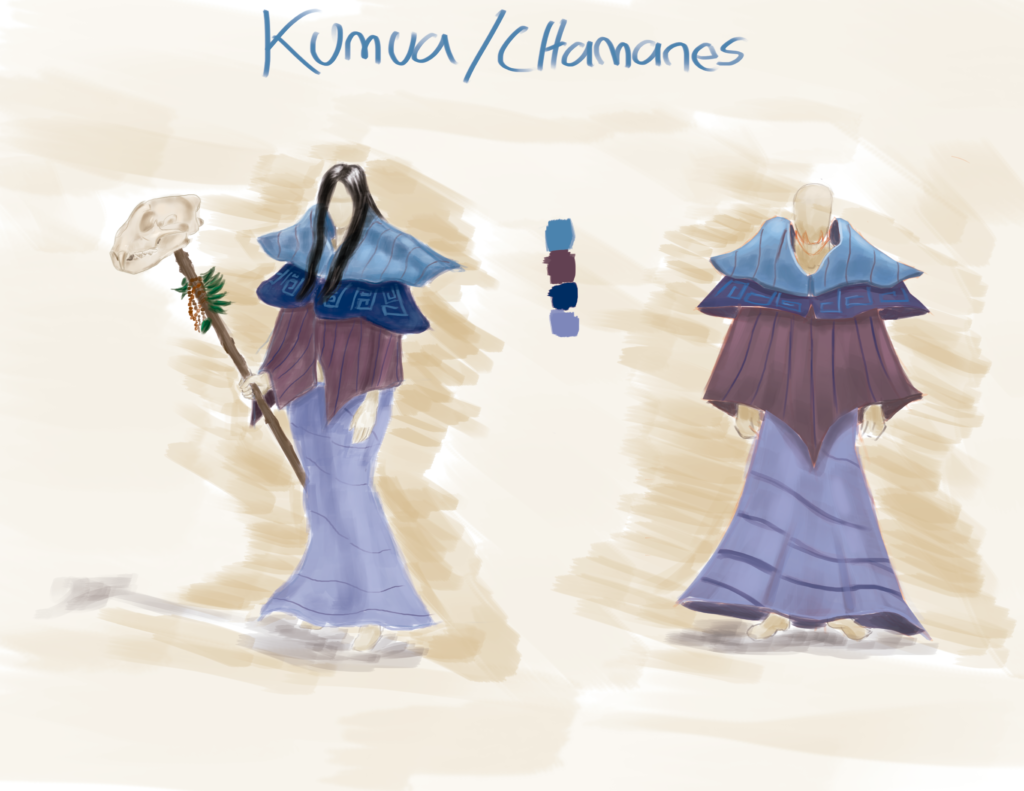Yai: design fictions for epistemic conflict
ENGLISH
This project attempts to provoke (epistemic) conflict via a narrative based on the question ¿What if shamanic practices would take over Bogotá? The narrative is structured through several elements; on one side, there are 5 ‘crafts’ based on the anaconda’s body according to the makuna: the ‘malokeros’, the ‘cantores’ (singers), the warriors, the shamans and the ‘chagreros’. On the other side, the story has two central characters: César, a western(ised) man who embraces his western episteme and refuses to acknowledge others, and Haku, a shaman apprentice who guides Cesar in his healing process. The narrative -materialised in the form of a design fiction– is also structured around 4 decolonial ‘rules’: the ‘pagamento’ (tax or offer that indigenous peoples do to the gods or the territory), reciprocity, non-anthropocentrism and tori uke (taken from Judo).
The characters and scenarios of the narrative have been represented through illystrations and concept art (from the perspective of an industrial designer). The whole narrative excercise has seeked to provoke a conflict in the interlocutor (reader), aiming for him/her to begin a ‘journey’, being the fiction the path of such journey and cause of conflict, as well as triggering questions that unleash the approach and understanding of other epistemes. The reason for this is a concept I dubbed epistemic lethargy, a ‘sleepy’ state in which western(ised) men and women are, which does not allow us to see other valid forms of understanding the world; instead, when we confront ourselves to other epistemes we do not understand, we attempt to reduce it or discredit it, as the tools that our episteme gives us are not enough to understand others.
SPANISH
El proyecto se enfoca en causar un conflicto a través de una narrativa que tiene como base el desarrollo de la pregunta ¿Qué pasaría si llegaran las practicas chamánicas a Bogotá? La narrativa esta creada alrededor de varios elementos: el desarrollo de 5 oficios según el cuerpo de la anaconda para los makuna, los cuales para la narrativa son: los malokeros, los cantores, los guerreros, los chamanes y los chagreros. También la narrativa contiene 2 protagonistas: César el cual es un hombre occidental que se abraza a su episteme occidental y se niega a entender otras, y Haku un aprendiz de chaman el cual va a guiar a César en un proceso de auto sanación. También la narrativa se crea a partir de 4 reglas decoloniales, las cuales son: El pagamento, la reciprocidad, el NO antropocentrismo y finalmente tori y uke, la ultima es tomada del Judo como arte marcial.
Los personajes instaurados en la narrativa y los escenarios de la misma se representaron a través de la ilustración y el concept art desde el diseño industrial. Todo este ejercicio narrativo esta en pro de causar un conflicto al interlocutor, para que este entre en un viaje, siendo la narrativa el camino y causante de este conflicto y preguntas que desaten el acercamiento y entendimiento de epistemes otras. La razón de esto es un estado que descubrí en la investigación, el cual llame el letargo epistémico, entendiéndose como ese estado de somnolencia en el cual nos encontramos los hombres y mujeres occidentalizados que no nos permite ver otra formas de entender el mundo como un igual, todo lo contrario, cuando no entendemos una episteme, intentamos reducirla o desprestigiarla, porque las herramientas que nos da nuestra episteme no van a ser suficientes o en algunos casos serán nulas para entender otras.









Discussion Yai: design fictions for epistemic conflict